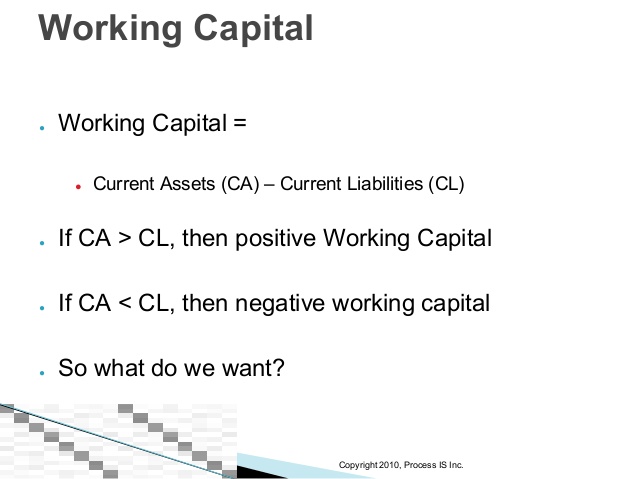

These fourteen countries came to be known as the “Cairns Group”, and included mostly small and medium-sized agricultural exporters such as Australia, Brazil, Canada, Indonesia, and New Zealand. The critical juncture was reached during the Uruguay Round of multilateral trade negotiations, which may be called the final act. Popularly known as Dunkel agreement, It finally emerged as the World Trade Organisation on 1st January, 1995. I) A legal agreement between several countries with the ultimate goal of facilitating foreign trade, such as the removal or reduction of trade barriers such as tariffs or quotas, is a General Agreement on Tariffs and Trade. The Tokyo Round lasted from 1973 to 1979, with 102 countries participating. It continued GATT’s efforts to progressively reduce tariffs.
Countries like Russia which had refused to join such agreements have of late become members of the World Trade Organization. It was to be the highly ambitious International Trade Organization . The 50 countries that started negotiations wanted it to be an agency within the United Nations that would create rules, not just on trade, but also on employment, commodity agreements, business practices, foreign direct investment, and services. Congress and some other countries’ legislatures refused to ratify it.

As we have studied, GATT was only supposed to be a stand-in for the third pillar of the economic superstructure, the ITO. However, with the ITO being a stillborn, GATT was asked to step up and fill the shoes. But since partly because of the reason for its foundation, a way for developed countries to further impose their hegemony, GATT in my opinion was a sophomoric arrangement. Underdeveloped countries to further their economic development under procedures approved by GATT. The most-favored-nation clause requires countries to offer the same trade terms to all trading partners, with notable exceptions under WTO rules. An environmental tariff is a tax on products imported to or exported from countries with unsatisfactory environmental pollution controls.
It remained in effect until 1 January 1995, when the World Trade Organization was established after agreement by 123 nations in Marrakesh on 15 April 1994, as part of the Uruguay Round Agreements. The WTO is the successor to the GATT, and the original GATT text is still in effect under the WTO framework, subject to the modifications of GATT 1994. Nations that were not party in 1995 to the GATT need to meet the minimum conditions spelled out in specific documents before they can accede; in September 2019, the list contained 36 nations.
United Nation Security Council: India Elected As Non-Permanent Member for The 8th Time
Another hindrance to the success of General Agreement on Trade and Tariffs and World Trade Organization agreement the uncontrolled rise in the number of multinational corporations which unregulated. The increase in their numbers has been an impediment in controlling them as well as managing of these multinationals at the international level. The gap between the rich and the poor is continuously growing and this has brought difficulties in the current economy. This has resulted in the World Trade Organization becoming unable to regulate the provisions of the agreements as well as the standardization of the same. Bringing about uniformity of procedures has become difficult since there exists a discrepancy in the personal incomes among individuals. The structure of the World Trade Organization has attracted many member countries as opposed to the General Agreement of Trade and Tariffs which had fewer members.
It was intended to boost economic recovery after World War II. GATT’s success in reducing tariffs to such a low level, combined with a series of economic recessions in the 1970s and early 1980s, drove governments to devise other forms of protection for sectors facing increased foreign competition. High rates of unemployment and constant factory closures led governments in Western Europe and North America to seek bilateral market-sharing arrangements with competitors and to embark on a subsidies race to maintain their holds on agricultural trade. Both these changes undermined GATT’s credibility and effectiveness. The Havana conference began on 21 November 1947, less than a month after GATT was signed.
- In contrast to the above example, if I wanted to send an update from from the computer to Bean, the computer acts as a server and Bean acts as a client.
- In contrast to the Great Economic Depression which led to the smoot Hawley tariffs by the US on the world in 1930.
- The next big event was the Uruguay Round, which lasted from 1986 to 1993, with the agreements signed in 1994, and created the WTO.
One of the main reasons behind the collapse of the GATT was that the organization was in favor of the industrial countries, and lost confidence among the developing countries. The World Trade Organization has expanded from trading with goods to services and intellectual property leading to a drift in the international trade. In Uruguay the economic conditions have changed where the agricultural products for the country are freely traded leading to an increase in the Gross Domestic Product and thus the per capita income and the rate of employment consequently increased. The tariffs also reduced to by 40 percent marking a positive improvement in the national economy. Other countries that have benefitted from such agreements include Turkey where quotas for their products have been removed and subsidization increased.
The latest round of negotiations among WTO members, known as the Doha Development Round, began in 2001 and is ongoing. Its aim is to improve the trading prospects of developing countries by introducing lower trade barriers and revised trade rules. The General Agreement on Tariffs and Trade , signed in 1947 by 23 countries, is a treaty minimizing barriers to international trade by eliminating or reducing quotas, tariffs, and subsidies.
What is GATT ? General Agreement on Tariffs and Trade
This due to the fact that the former has a membership structure while the latter had a special secretariat which limited membership. The rules in the WTO led to many countries adopting a better way of managing the member countries. Any information contained within this essay is intended for educational purposes only. It should not be treated as authoritative or accurate when considering investments or other financial products. Discuss International Military Tribunals at Nuremberg The International Military Tribunal at Nuremberg was lawfully established, and treated the defendants fairly. In this case, the Appellate Body upheld that the imposition of higher taxes on vodka products compared with the taxes imposed on shochu drinks is considered a violation of article 3 of the GATT.
Therefore, the GATT 1994 is itself a component of the WTO Agreement. The details of the GATT were adjusted in the decades that followed its creation. The main goal of continued negotiations was to further reduce tariffs. In the mid-1960s, the Kennedy gatt was formed to fill up the gap of round added an anti-dumping agreement. Did this mean that trade rounds were the only route to success? In 1997, single-sector talks were concluded successfully in basic telecommunications, information technology equipment and financial services.
Therefore, there was grand bargain for WTO in which developed countries agreed to include trade in agriculture & textile under WTO with some exception and developing countries allowed inclusion of trade in services and IPR under WTO. In 1950, it announced that it would not seek Congressional ratification of the Havana Charter, and the ITO was effectively dead. The ITO Charter was finally agreed in Havana in March 1948, but ratification in some national legislatures proved impossible. The most serious opposition was in the US Congress, even though the US government had been one of the driving forces. The had become too ambitious and as discussed reflected the strength of the developing nations and their favourable policies. So, the GATT became the only multilateral instrument governing international trade from 1948 until the WTO was established in 1995.
The currency has evolved from a mere exchange of commodities for commodities to paper and coinage money and today we have representative fraction being used as a means of exchange. Services have also been exchanged over time and this has complicated trade among nations. The underlying challenge of barter trade has been the fact that sometimes there is lack of double coincidence of wants. More so commodities lack the standard measure of value and even some commodities cannot be divided in to smaller units.
GATT and the World Trade Organization
The was left many countries in Europe and Asia totally battered. Their economies were shattered; there was tremendous stain on political and social systems resulting in wide spread annihilation and migration of people. Something had to be done to put these war-ravaged economies back in shape.
Journey from GATT to WTO: History & meaning of GATT & WTO.
In addition, the negotiations on chemicals led to a provisional agreement on the abolition of the American Selling Price . This was a method of valuing some chemicals used by the noted States for the imposition of import duties which gave domestic manufacturers a much higher level of protection than the tariff schedule indicated. The GATT was first discussed during the United Nations Conference on Trade and Employment and was the outcome of the failure of negotiating governments to create the International Trade Organization . It was signed by 23 nations in Geneva on 30 October 1947, and was applied on a provisional basis 1 January 1948.
The GATT originally covered international trade rules in the goods sector only. Domestic policies were outside the GATT purview and it operated only at international border. In the Uruguay Round, the GATT extended to three new areas, viz. It also covered agriculture and textiles, which were outside the GATT jurisdiction. The GATT’s main objective was the reduction of barriers to international trade. This was achieved through the reduction of tariff barriers, quantitative restrictions and subsidies on trade through a series of agreements.
In 1950, the Truman administration declared defeat, effectively ending the ITO. The Agreement on Agriculture of the Uruguay Round continues to be the most substantial trade liberalisation agreement in agricultural products in the history of trade negotiations. According to its preamble, its purpose was the “substantial reduction of tariffs and other trade barriers and the elimination of preferences, on a reciprocal and mutually advantageous basis.” GATT was provisional with a limited field of action, but its success over 47 years in promoting and securing the liberalization of much of world trade is incontestable. Continual reductions in tariffs alone helped spur very high rates of world trade growth during the 1950s and 1960s — around 8% a year on average. And the momentum of trade liberalization helped ensure that trade growth consistently out-paced production growth throughout the GATT era, a measure of countries’ increasing ability to trade with each other and to reap the benefits of trade.
Japan’s high economic growth rate portended the major role it would play later as an exporter, but the focal point of the Kennedy Round always was the United States-EEC relationship. Indeed, there was an influential American view that saw what became the Kennedy Round as the start of a transatlantic partnership that might ultimately lead to a transatlantic economic community. 8,700 tariff concessions were made totalling the remaining amount of tariffs to ¾ of the tariffs which were in effect in 1948. The contemporaneous rejection by the U.S. of the Havana Charter signified the establishment of the GATT as a governing world body.
The Bretton Woods-GATT system was founded by the International Monetary Fund, The World Bank and the General Agreement on Trade and Tariffs. The three were targeting to form an open global market by establishing free trade areas and giving up capitalism that existed in some countries. The systems of trading have been experiencing radical changes due to the dynamism of the world economy. The todays’ currency in the various countries did not just find itself there.
III) The General Agreement on Tariffs and Trade is a legal agreement between several countries with the ultimate goal of facilitating foreign trade by reducing or removing barriers to trade, such as tariffs or quotas. As the first worldwide multilateral free trade agreement, the GATT governed a significant portion of international trade between January 1, 1948, and January 1, 1995. The agreement ended when it was replaced by the more robust World Trade Organization . Meanwhile, 15 countries had begun talks in December 1945 to reduce and bind customs tariffs. With the Second World War only recently ended, they wanted to give an early boost to trade liberalization, and to begin to correct the legacy of protectionist measures which remained in place from the early 1930s. Some blamed a cold war moon for casting a shadow over the internationalist sun.
Plus, more active participation by them evidenced by Doha development Round, leading to focus being shifted on matters important to developing countries like agricultural products. The Bretton Woods system was incomplete from the beginning, lacking its intended third pillar. The GATT was a poor substitute and did not fill the gap as, for example, it had no functions for the stabilization of commodity prices or regulation of commodity markets. The latter’s failing has since become more, not less, significant for global prosperity. Attempts to create an influential trade organisation within the UN failed and GATT continued to function. It galvanised the two developed countries into greater co-operation with developing countries which had no safeguards.
It was the most ambitious round to date, as of 1986, hoping to expand the competence of the GATT to important new areas such as services, capital, intellectual property, textiles, and agriculture. The Uruguay Round was also the first set of multilateral trade negotiations in which developing countries had played an active role. The weaknesses of the GATT was behind its failure, including the existence of legal problems, particularly in the areas of agriculture and textiles. For example, it can be noted that the United States was not able to convince Japan and China within the framework of the GATT to open its markets to U.S. goods. In addition, the GATT failed to cover trade in services and intellectual property rights, and the absence of an international mechanism to resolve disputes in international trade.